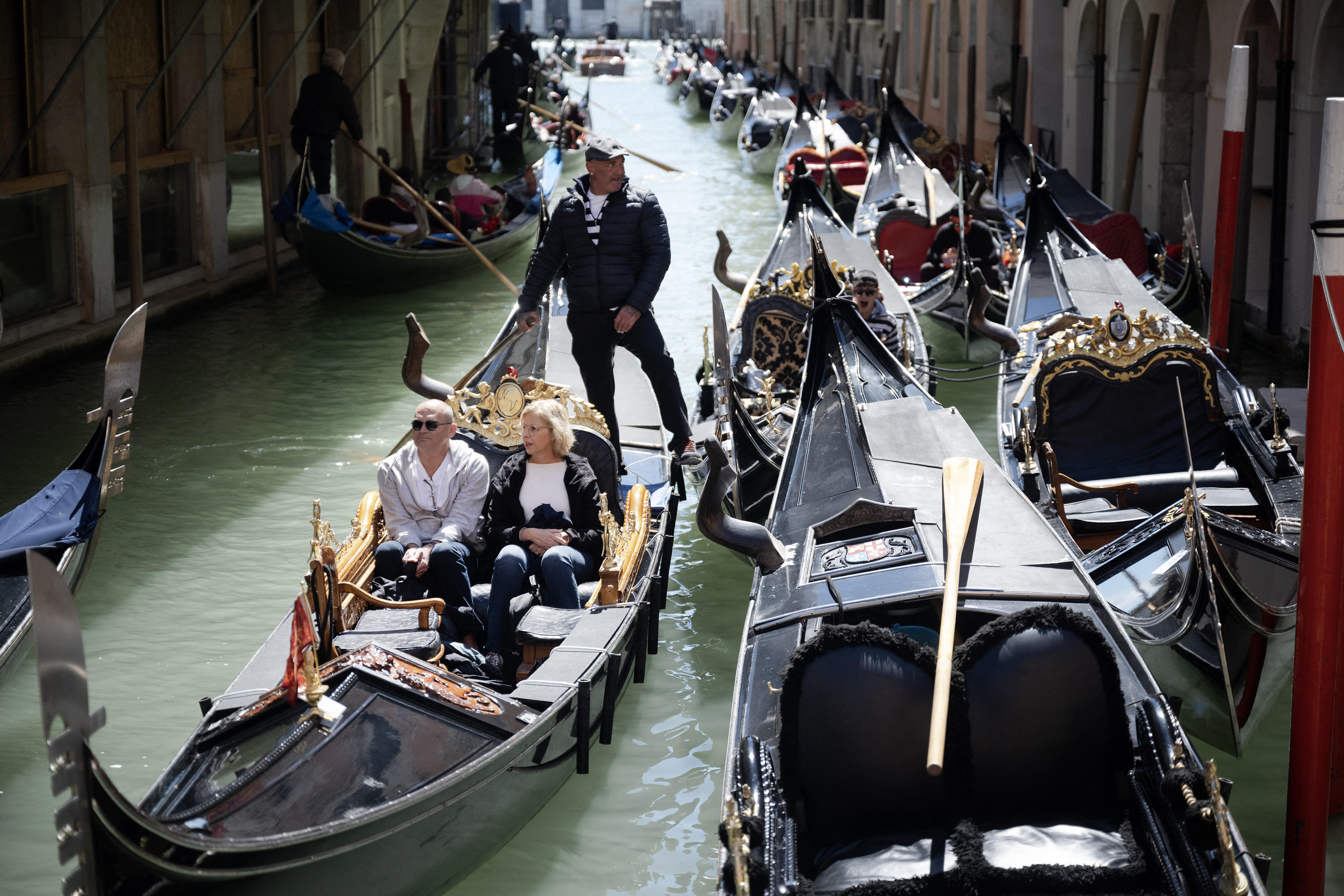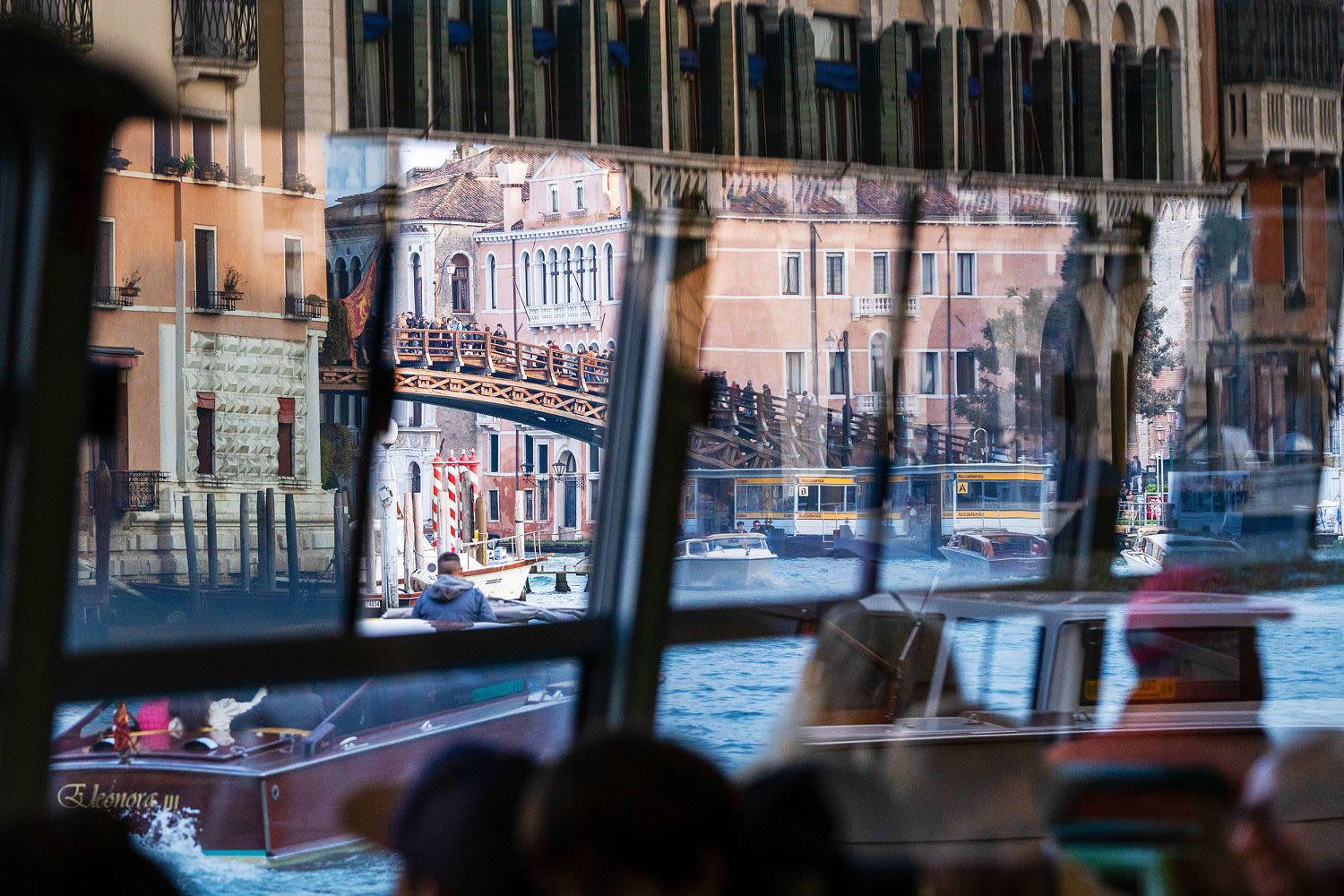Search results
News about Pope Francis, Venice, Italy
News about Venice, overtourism, pilot program
- Just Wander…Get Lost in Venice. Put down your map and just wander. Forget the big, popular sites (we will get to those soon). The smaller canals off of the main tourist trail are perfect for wandering.
- St. Mark’s Square. St. Mark’s Square is the heart of Venice. From here you can easily visit most of the other main sites. The best things to do here? Take a 360° panorama photo and go people watching.
- Climb the Campanile di San Marco. The Campanile is the bell tower that dominates the skyline of Venice. The only way to the top is by elevator. From the top, your reward is one of the best views of the city.
- View Venice from the Rialto Bridge. Spanning the Grand Canal, the Ponte di Rialto is Venice’s most popular bridge. From the top of the bridge, enjoy another fantastic, iconic view of this city.
Things to Do in Venice, Italy: See Tripadvisor's 1,455,105 traveler reviews and photos of Venice tourist attractions. Find what to do today, this weekend, or in May. We have reviews of the best places to see in Venice. Visit top-rated & must-see attractions.
- Overview
- Terraferma
Venice, city, major seaport, and capital of both the provincia (province) of Venezia and the regione (region) of Veneto, northern Italy. An island city, it was once the centre of a maritime republic. It was the greatest seaport in late medieval Europe and the continent’s commercial and cultural link to Asia. Venice is unique environmentally, architecturally, and historically, and in its days as a republic the city was styled la serenissima (“the most serene” or “sublime”). It remains a major Italian port in the northern Adriatic Sea and is one of the world’s oldest tourist and cultural centres.
Since the fall of the Venetian republic in 1797, the city has held an unrivaled place in the Western imagination and has been endlessly described in prose and verse. The luminous spectacle of ornate marbled and frescoed palaces, bell towers, and domes reflected in the sparkling waters of the lagoon under a blue Adriatic sky has been painted, photographed, and filmed to such an extent that it is difficult to distinguish the real city from its romantic representations. The visitor arriving in Venice is still transported into another world, one whose atmosphere and beauty remain incomparable.
Although Venice may aptly be regarded as an isolated sea city, it has always had close links with the surrounding marshlands and the mainland of northern Italy. The Venetian republic included the perimeter of the lagoon, the dogado, within its territory. In addition, from the early 15th century it amassed a large land empire known as terraferma (“dry land”), stretching from the Istrian Peninsula in the east to the borders of Milan in the west and from the Po River in the south to the high Alps in the north. From the 16th century onward, the Venetians invested heavily in the purchase, reclamation, and drainage of terraferma lands. The imprint of the republic may still be seen in former subject cities, such as Padua, Verona, and Vicenza, where Venetian Gothic palaces line the streets and the symbol of Venice, the lion of San Marco, stands over the city squares.
Today the administrative city, or comune, of Venice embraces the 90-mile (145-km) perimeter of the lagoon, taking in the urban and industrial areas of Mestre and Marghera and the Marco Polo International Airport at Tessera. The proportion of the population of the comune that lives in Venice itself has shrunk steadily. At the beginning of the 20th century the historic city centre contained three-fourths of the comune’s population, and at mid-century it still contained more than half. By the beginning of the 21st century that fraction had shrunk to less than one-fourth.
Exclusive academic rate for students! Save 67% on Britannica Premium.
Learn More
- Explore Saint Mark’s Square. St. Mark the Evangelist is Venice’s patron saint. Signs of this connection can be found throughout the city, with an excellent example being St. Mark’s Square.
- Libreria Acqua Alta Book Store. Perhaps unsurprisingly, flooding is a frequent problem for a city built on water. So various Venetian institutions have come up with unique responses to the problem.
- The Bridge Of Sighs. The Bridge Of Sighs is a unique enclosed bridge of white limestone spanning the Rio di Palazzo in Venice. There’s an interesting story behind the name.
- The Grand Canal (Canale Grande) Venice was once the capital of a maritime empire, and a center of commerce and culture during Europe’s Renaissance period.
1. Take in the Piazza San Marco. For many people, this waterfront square is Venice: the rolling domes of the basilica, the centuries-old cafes beneath the stately porticoes, the vast Campanile (belltower) throwing its shadow around the square, high tide occasionally sloshing around your feet.
Get started. 01 / Attractions. Must-see attractions. Basilica di San Marco. Venice. With a profusion of domes and more than 8000 sq metres of luminous mosaics, Venice's cathedral is unforgettable. It was founded in the 9th century to… Palazzo Ducale. Venice.



